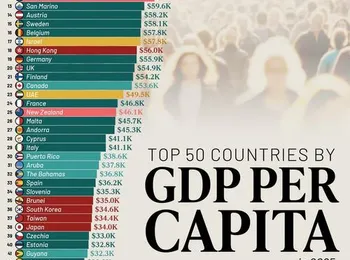Apple stock has faced significant headwinds this year, with shares down 20% since the beginning of 2025, placing it behind the ‘Magnificent Seven’ tech giants. Despite this downturn, a growing number of Wall Street analysts are viewing the current price as a compelling entry point for long-term investors. The core issue driving Apple’s underperformance centers around external pressures, primarily the ongoing trade war and associated tariff uncertainties impacting its substantial manufacturing operations within China. Angelo Zino, Senior Equity Strategist at CFRA Research, highlighted this vulnerability, stating that Apple’s reliance on Chinese factories makes it particularly susceptible to the financial consequences of these trade disputes. Zino further emphasized a positive outlook, asserting that the current stock price represents a favorable opportunity for investors, considering Apple’s enduring brand strength and consistent pricing power. This perspective aligns with that of James Demmert, Chief Investment Officer at Main Street Research, who believes that the market has already priced in all the negative news surrounding the stock. Demmert’s assessment suggests that the current price reflects the full extent of the challenges Apple faces, presenting a strategic advantage for those willing to take a long-term position.
Adding to this view, several prominent investment firms have expressed confidence in Apple’s future despite the prevailing headwinds. Goldman Sachs maintains a ‘buy’ rating for AAPL with a 12-month price target of $253, indicating a belief in the company’s continued success. Similarly, UBS retains a ‘neutral’ rating and a $210 price target, suggesting a cautious optimism regarding Apple’s long-term prospects. These recommendations underscore the recognition of Apple’s fundamental strengths, including its innovative product pipeline and loyal customer base, which are expected to mitigate the impact of short-term market volatility. The combination of these institutional perspectives suggests a consensus view that Apple’s long-term value remains intact, even as the company navigates complex geopolitical and economic challenges.
However, not all analysts share this optimistic outlook. James Cakmak, Chief Investment Officer at Clockwise Capital, has taken a more cautious approach, announcing that the firm has divested its Apple holdings due to concerns about tariff-related risks. Cakmak’s decision reflects a prioritization of risk mitigation, acknowledging the potential for further negative impacts stemming from trade disputes. This decision highlights the divergent opinions within the investment community, demonstrating the complexities involved in assessing Apple’s future performance. It’s crucial for investors to understand that these varying viewpoints represent different risk tolerances and investment strategies.
The fluctuating performance of Apple’s stock and the contrasting opinions of market experts underscore the inherent dynamism of the stock market. The situation serves as a reminder that short-term market movements can be influenced by a variety of factors, including macroeconomic trends, geopolitical events, and investor sentiment. Consequently, a thorough and strategic approach to investing is paramount. Careful analysis, coupled with a long-term investment horizon, is essential for navigating the complexities of the market. The current situation emphasizes the importance of understanding the underlying drivers of Apple’s performance and assessing the potential impact of external factors. Investors should prioritize a disciplined approach, focusing on the company’s core strengths and its ability to adapt to evolving market conditions. Ultimately, the decision to invest in Apple stock remains a personal one, contingent upon an individual’s risk tolerance and investment objectives.
Looking ahead, Apple continues to invest heavily in innovation, particularly in areas such as foldable iPhones, smart glasses, and artificial intelligence. Recent restructuring within Apple’s AI team indicates a commitment to further developing these technologies. These advancements are expected to drive future growth and maintain Apple’s competitive edge. However, the company’s success will depend on its ability to successfully execute its strategic initiatives and navigate the ongoing challenges presented by the global trade environment. The interplay between innovation and external pressures will undoubtedly shape Apple’s trajectory in the years to come.
























